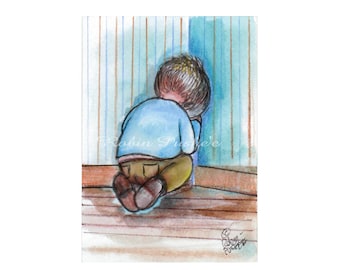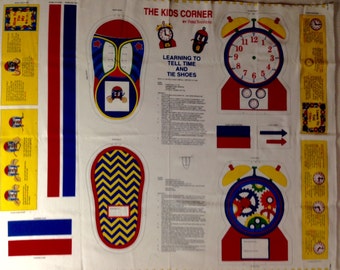

This helps your child take back some control of the situation. When your child is at least 3 years old, you can try giving him a time-out without a timer and tell him to come out of it when he feels ready and has calmed down. (There are other ways to set limits for younger toddlers.) Younger toddlers can’t understand why they’re being sent away from you or the fun, and they have trouble sitting still for even a nanosecond. When can you start time-outs? After your child has turned 2, say most parenting pros. Otherwise, your toddler will be more tempted to wander away. After all, time passes very slowly for younger kids, especially if you're confined to the naughty chair without any attention. You might be able to get the message across to your 2-year-old in 30 seconds. The rule of thumb is one minute per year of age, so 2-year-olds get two minutes, 3-year-olds, three minutes, and so on. While in the room, sit with your little rebel in silence. On a toddler playdate? Take your child to a different room, but stick around (being put in unfamiliar surroundings is very scary for kids this age and pushes the time-out too far). Sitting on a bench with a grown-up while happy children frolic all around might make your toddler think twice before throwing sticks again. If you’re at the playground, get your child to sit quietly next to you for the duration of the time-out. These may be a little trickier, but time-outs for a toddler can be done anywhere. Place it in a dull, toy-less place and start the timer. Small mats or blankets can take the place of a chair, and they’re portable, so you can use them in public, at a friend’s house or in any corner in your home. Try to avoid using a corner in your toddler’s bedroom, where toys and other things can tempt him - unless you want to remove all playthings each time you put your toddler in a time-out. Then place a chair or mat for your child to sit on in the corner for a minute or two. Again, pick one in a dull place, like an unused corner by the pantry or hallway where your child can’t be distracted. Time-out cornerĪnother classic is a time-out corner. Or stand behind the chair so your child doesn’t try that again, and don’t respond to any questions until the time is up. But do it matter-of-factly, without talking or making eye contact. If your child does stand on the chair or does something dangerous, stop the behavior. Then leave your toddler there, sticking close by to make sure your tot won’t climb on the chair. Make sure the chair is on a soft surface, like a carpet or mat, so your little one doesn't get injured if he falls off. Put the chair in the most boring room in the house or facing a blank wall, but far enough away so your toddler can’t kick or punch the wall. Sturdy adult-sized kitchen chairs work best, as your child won’t be able to scoot them around (or rock in them). The time-out chair is the classic place for toddlers who need to simmer down. Here are various methods for doing a time-out with your tot: Time-out chair If he plays quietly beside the crib or amuses his sister without doing anything dangerous, praise him for his good behavior.

When time-out is over, get your child and explain the rule again (“We don’t climb into the crib.”) Then get your toddler involved in another activity.

If your child tries to leave the time-out space, put him back without talking. Leave your toddler in his time-out space for the designated time. Set a kitchen timer or the alarm on your phone. If he continues the behavior, calmly say, “You have to go into a time-out because you climbed into the crib.” That’s it. So if you catch your toddler breaking a rule - trying to climb into his sister’s crib, for instance - say, “If you don’t stop climbing into the crib, you’ll get a time-out.” You don’t want to swoop and give a time-out without a heads-up. But there are certain steps that are central to all time-outs for toddlers, no matter where you put your tiny rule-breaker:

There’s more than one way to give a time-out - you can have a designated time-out space or vary the location.
#TIME OUT CORNER IDEAS PINTEREST HOW TO#
Here’s how to use time-outs for toddlers wisely. Time-outs can be overused and they’re not right for every child, so they shouldn’t be the only tool in your toddler discipline toolkit. This short breather gives your toddler time to regain control of his feelings and sends a message that you don’t tolerate bad behavior. The key is to think of a time-out not as a punishment, but as a brief (emphasis on brief!) break from a negative situation.


 0 kommentar(er)
0 kommentar(er)
